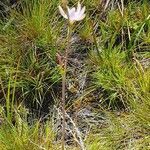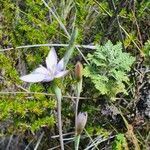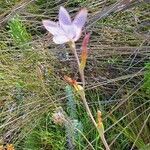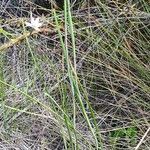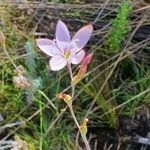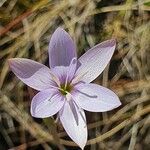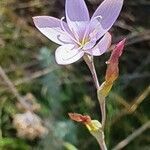Leaves 3–4, the lower 2(3) basal and longer than the others, 2–6 mm wide and about half to two-thirds as long as the stem, the margins and midrib usually lightly thickened; upper leaf inserted in the middle of the stem, short and usually entirely sheathing.
A herb. It grows 8-30 cm high. It is similar to Hesperantha baurii. The corms are 7-12 mm across. There are 3-4 leaves. They are 2-6 mm wide. The flowering spike has 2-6 flowers. They are pink, light purple or white. The fruit is a capsule 10-15 mm long.
Corms 7–12 mm in diameter, globose to ovoid; tunics dark-brown, woody to somewhat membranous, concentric.
Tepals (9)12–18 × 5–7 mm, ovate-elliptic, the outer often flushed darker on the reverse.
Flowers pink, lilac or white; perianth tube 6–9 mm long, cylindric and straight.
Spike (1)2–6(9)-flowered; floral bracts (9)12–15 mm long.
Capsules 10–15 mm long, oblong-ellipsoid.
Stem erect, very occasionally branched.
Style branches 6 mm long.
Anthers (3)4–7.5 mm long.
Plants 8–30(45) cm high.
